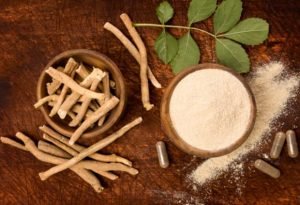
by admin | Apr 9, 2022 | Health
“I Don’t Have Time” | Part 2 – How To Eat On A Busy Schedule
In the previous part of this article series, we gave you actionable tips on how to integrate training into a busy schedule. However, setting up your training regimen is just half the battle and if it is not supported by a proper nutrition plan, then all your hard work will be in vain.
This is why, in this article, we’re going to tell you exactly how you can create sustainable nutrition habits, which you can adhere to.
What is Meal Prep & Why and How You Should Do It
Meal prepping is without a doubt one of the most efficient ways to ensure you’ll get all your nutrients in. This method will save you time and money and will also give your body EVERYTHING needed to sustain healthy functioning, as well as any daily physical and mental activities.
At its very core, meal prepping implies cooking for a couple of days ahead, all at once. This is a very flexible approach, as it allows you to prepare certain foods in bulk, which you can then use to create a variety of recipes.
Step #1 – Choose your Protein & Fat sources

As you should know by now, protein & fats are essential to the body, as they regulate a variety of vital processes, including but not limited to recovery, healthy functioning of all bodily systems and tissues, regulating hormonal function, etc. If any of the 2 is in a deficit, you may experience unpleasant side effects, such as premature exhaustion, constant tiredness, brain fogs and disrupted sleep cycles.
This is why it is a good idea to pick out your protein & fat sources in the first place. If you’re an omnivore, animal products should be your main protein & fat sources, as they contain all essential amino acids & fatty acids.
Essential basically means those are nutrients the body needs for optimal health, but can’t produce on its own. This means that most of your daily protein will come from foods like chicken, beef, eggs, fish, prawns, cheese, and other dairy products.
If however, you are a vegetarian or a vegan, you are best off combining different grains, beans, and other legumes, to get the full amino acid profile.
Step #2 – Choose Your Carbohydrate Sources

Now, protein and fats are essential for the body but the fact of the matter is that carbohydrates aren’t really the same. Though they are the preferred energy source for the body, they are non-essential, since the body can produce glucose via a process called “gluconeogenesis”. And though that stands true, it is always a good idea to get your daily carbohydrates in, especially if you are an active individual.
The best sources of carbohydrates are all grains, beans, legumes & other wholegrain products. These will grant a consistent, gradual flow of energy to the body, to meet all its energy needs for physical and mental activities. We recommend white & brown rice, sweet potatoes, oats, starchy vegetables & fruits.
Step #3 – What about micronutrients
Besides protein and fat, most micronutrients are also essential to the body, as it needs them to regulate certain processes. However, if you rely on diverse nutrition and include plenty of different products in your menu, you don’t really need to pay specific attention to micronutrients. That is unless of course, you have certain micronutrient deficiencies, at which case your best bet is to consult with your doctor.
Step #4 – Cook in bulk!

Once you’ve picked out your favorite protein, fat & carbohydrate sources, it is time to cook!
For the meats, you can use basic marinade – Soy sauce, salt & pepper. Once that’s done, you’ll have ~2-3 lbs of meat all cooked and ready. For your grains and root crops, you can use basic seasoning and preparation.
Once that’s done, you’ll have a solid amount of carbohydrates ready on demand. Since these are prepared in a very basic way, you can use them as a BASE to add upon. And so for example, you can take some of the pre-cooked meat and toss it in a pre-heated pan with some vegetables, glazes & other spices.
The same goes for your carb sources, meaning that you can craft a variety of recipes and bring diversity to your nutrition, even though you cook the same foods every time.
Again, these are just your bases for meals and you can furthermore add vegetables, dried tomatoes, olives, capers and any other side products you may like.
Step #5 – Enjoy your food & time
Most people think that cooking your own food is time & money-consuming, but the truth is that it really is just the opposite of that. Home prepped food is ALWAYS cheaper and takes less total time…
On top of that, developing this healthy habit will actually GIVE YOU more time on this precious planet. So, what is it you can lose with meal prepping? Nothing, really.
Conclusion
In the modern-day, busy daily lifestyle, eating healthily can often be a difficult task for many people. More often than not, people fall for trend diets that don’t really pay any attention to the actual needs of their bodies. This is where establishing an individual nutrition plan and cooking your own food, can come in handy.
Generally, following a balanced, diverse approach to nutrition is your best bet, as that will grant the body all the macro and micro nutrients that it needs to function well. Furthermore, following this approach & preparing the majority of your foods in bulk, is something you can do to save you time and money.
Remember to ALWAYS take care of your body, on the regular basis. Nutrition is not a diet with a start and end date, but rather a habit you should adopt and maintain for the rest of your life.

by admin | Mar 24, 2022 | Fitness
Muscle Building 101 | Part 1 – Measuring your workout
When the task at hand is to build as much quality muscle mass as possible, there are two things you should look at: Your training and your nutrition. Muscle gaining is technically a process of stimulus, followed by a period of recovery. At its very essence, muscle gaining is just your body preparing for bigger challenges, ahead of time.
In this series of articles, we’ll take you through everything you need to know, in order to create your PERFECT muscle-building blueprint. The first part of the series goes over one of the most important things for the goal, namely, analyzing, measuring and setting up your workout.
Now let’s get to it
How to measure a workout
If you think about it, when you are in the gym, you’re working with weights… Those weights are numbers and when we have numbers, there is a certain level of mathematics involved. That is to say… There’s actually a mathematical formula for muscle gains!
Your workout can be measured by 3 main variables:
- Intensity
- Volume
- Density
Intensity is a measure of how close you get to your maximum strength capabilities. The closer you get, the higher your intensity is, meaning that it increases as your working weight goes up.
Volume is a measure of your total working weight, for all of your exercises, sets, and reps. You can measure volume using this formula: Weight * Sets * Reps = Volume For instance, using 100 kg for 2 sets of 10 would create a volume of 2000 kg (100*2*10=2000 kg)
Last but not least, we have density, which is a measure of your volume, related to the total time needed for its completion, including rest times. To measure density, you use this formula: Volume / Total completion time = Density (kg per minute) For instance, if those 2 sets of 10 with 100 kg take you 2 minutes to complete, this would be a density of 1000 kg/min.
But How Do You Measure Intensity?

Alright, so far you learned the following:
- Volume = Weight * Sets * Reps
- Density = Volume / Total completion time
But how exactly can you measure intensity…? Well, here comes the practical part!
To get an idea of what 100% intensity looks like for you, for a certain exercise, you have to find out the weight you can lift for one single repetition – This will show you your maximum strength capabilities.
To do this, you will use the “One repetition maximum” method. Again, this method implies using a weight that will take your muscles to failure after one single rep, meaning that you will not be able to complete a second rep unassisted.
How to test your 1 rep max
Before we get to the actionable steps, if you are a beginner, avoid testing your one-rep max, as it may lead to injuries. Instead, use the same scheme but go for a 5 rep max instead, where you use a weight that takes your muscles to failure at around the 5th repetition.
Here are the steps to testing your one-rep max:

- Warm-up well – 3-5 minutes of light cardio
- Do a brief dynamic stretching routine to get each joint through its range of motion
- Do a set of 8-10 repetitions with no weight on the bar
- Rest for a minute
- Load the bar with a decent weight and do 6-8 repetitions
- Rest for 2 minutes
- Load the bar with a weight that will allow you to do 3 challenging repetitions
- Rest for 3 minutes
- Load the bar and attempt a one-rep max
- If successful, rest for 3-5 minutes and increase the weight
- Keep doing steps 9 and 10 until you reach the weight which is certainly your one-rep max
This same scheme can be used by beginners for the 5 rep max method.
Why you need to know this
Alright, this important bit of information we just gave you, is part of what will allow you to create your muscle-building blueprint. The reason why this is important is that the ratio of these variables is what will determine how the muscles work, what type of energy it uses, and thus, how it develops.
In the next article, we’ll explain to you exactly how these variables affect the way the body provides energy.
See you in part 2!

by admin | Mar 22, 2022 | Fitness
Muscle Building 101 | Part 2 – How the body provides energy
In the first part of the muscle-building series, you learned that the way you set up the variables in a workout, will practically change the end result. For instance, training closer to maximum intensity will primarily result in improvements in maximum strength. On the other hand, workouts that are moderately high in intensity will increase bulk muscle growth along with strength endurance.
In this article, we are going to have a look at how the body provides energy for activity of different parameters. Without further ado, let’s get to it!
ATP – The Body’s Main Energy Source

Adenosine triphosphate (ATP) is the purest source of biological energy for all living beings. ATP is technically used in every bodily process in most living beings, as this is a pure source of energy that can be used right away. During intense activity like weight training, however, the ATP stores get depleted fairly quickly, due to the demanding nature of the intense activity. Once depleted, the body needs to regenerate ATP, in order to continue the muscular activity.
To do so, the body utilizes 3 main energy systems:
- The ATP-Creatine system
- The anaerobic glycogen system
- The aerobic system
Now let’s have a look at each of those!
The ATP-Creatine system
This first energy system is the most powerful, but least sustainable energy system that the body uses. As mentioned, during intense activity, ATP gets depleted in about 5-6 seconds of work. Upon use, ATP gets broken down into ADP (adenosine diphosphate).
To recover ATP, the body uses its stores of creatine, joining a phosphate molecule from it with ADP and thus regenerating ATP for another 10 seconds of activity. That is to say, creatine is not just a supplement – It is the body’s natural, secondary energy reserve!
Think of the ATP-Creatine system as something utilized during a 60-100 meter sprint.
The Anaerobic Glycogen system

Once you are past the 15-second mark of your exercise, intensity naturally drops due to the low amounts of ATP & creatine.The body then needs to again, regenerate ATP to ensure energy for sustained muscular activity. To do so, the body starts tapping into its muscle glycogen.
Muscle glycogen is basically the stored form of blood sugar, which is derived from the consumption of carbohydrates. Through a process called “Anaerobic glycolysis”, the body restores ATP for another 90 seconds, without the need to use oxygen (this is what anaerobic means).
Think of the Anaerobic glycogen system as something utilized during a 200-400 meter sprint.
The Aerobic System
Now, the more you continue your activity after the 2-minute mark, the more intensity naturally drops and the more oxygen starts helping you to regenerate energy. mThe aerobic system uses muscle and liver glycogen, as well as fatty acids, to release energy and regenerate ATP, at the presence of oxygen.
This energy system is used to sustain low-intensity, prolonged activities.
As such, the aerobic energy system can be used for hours on end, unlike the first two (i.e you can run at a low pace for hours on end, but you can only sprint 200-400 meters at a time).
Think of the aerobic energy system as something utilized during a 5000-meter cross run.
Why This Is Important…
If you are trying to build muscle, you MUST know the best fuel you can provide your body with…And now, before we even got through the basic physiology of muscle building, there are two things you can take and use for your nutrition and supplementation:
- If you are primarily strength training, you can make use of a creatine supplement, which will saturate your muscles and increase output
- If you are primarily doing bodybuilding training, you can and should consume plenty of carbohydrates, as that will improve your overall performance
- If you are primarily doing endurance, cardio training, you can and should consume plenty of carbohydrates and fats, in order to optimize endurance
Ultimately, we can say that the ratios of the parameters in a workout, will determine which energy systems & active components get triggered and thus, determine the end result. Those active components we refer to are namely your muscle fibers. In the next article of this series, we will give you more insight into the types of muscle fibers, which your body activates, depending on how the training parameters are set.
See you there!
by admin | Mar 10, 2022 | Health
Essential oils for oral health
Nature has a wealth of medical solutions for treating pain, tension, stress, and other disorders that affect our bodies. Fans of herbs and spices are discovering that these beautiful plants and mixtures can help in the kitchen and on the buffet table and have remedies and medical properties which spread far and wide. The oils of these amazing herbs and plants are used in cooking and drinks too but lets look t how they can help our oral health.
Alternative home remedies for toothache pain have quickly gained popularity, with herbal and essential oils being the most popular and convenient pain relievers.
Clove oil
The Oil of Clove is the most widely accessible over-the-counter remedy in pharmacies.
Clove oil is extracted from the buds of the blooms of the Clove Plant, which can be found in Madagascar and Indonesia. Eugenol, a component found in clove oil, is analgesic and antibacterial in nature. Oil of clove is a particularly powerful source of dental pain treatment, among its numerous benefits. It relieves discomfort caused by sore gums, mouth sores, and mouth ulcers by numbing the area around the damaged tooth.
How to use it
Soak a cotton ball with a few drops of Oil of Clove and apply to the afflicted area to relieve toothache pain. Reports of it being used for this purpose date back more than 300 years. In China, it has been used for multiple purposes for more than 2,000 years, including as an antiparasitic agent. It may also work to prevent dental infection thanks to its antibacterial and anti-inflammatory characteristics but there needs to be more research around this. Do not ingest it.
Clove oil has also been applied to the skin as a topical anaesthetic. It’s sweet and aromatic, and it’s frequently used in toothpaste and even exotic foods as an ingredient and flavouring.
Note: Because this extract is harmful to human cells in large amounts, it should be used with caution. If you are using it in cooking it is better to opt for the dried spice. Clove oil is contraindicated in people who are hypersensitive to clove oil or eugenol. Clove oil should not be used while teething. Do not use if pregnant or nursing. Please do your research. https://www.drugs.com/mtm/clove.html
Topical. There are a couple of ways to apply clove oil to your skin if you want to use it for pain relief, wound healing, or to ease itching: Dilute clove oil in carrier oil, such as jojoba, coconut, or olive oil. To avoid life-threatening consequences, it should not be consumed or ingested in significant quantities.
Coconut Oil
It is said that gum disease and cavities can both be prevented with coconut oil. The secret, according to researchers, is the lauric acid in it, which reacts with chemicals in saliva. It cleans while also reducing plaque adherence and build up. It also has antibacterial characteristics, making it efficient against cavity-causing bacteria and the ability to keep gums moist, which is a key health benefit for people who suffer from dry mouth. Add a few drops of peppermint oil and brush your teeth or use the coconut oil for oil pulling to clean the teeth and tissues of the mouth.
Eucalyptus oil
This is used to relieve pain, reduce inflammation, kill germs, speed up healing, and get rid of bad breath. It’s yet another traditional treatment with a long list of advantages. According to research, it possesses antibacterial and anti-plaque qualities, making it useful in the fight against gum disease and decay. It’s been used to help heal wounds, relieve pain, and reduce inflammation in the past. It has a flavour that is both powerful and refreshing. When combined with the other oral health benefits, it fights bad breath on multiple levels.
Lemon oil
This is another essential oil that can be used as an alternative home treatment. Scurvy was once a frequent and deadly disease that afflicted coastal communities. Spongy gums, bleeding gums, and loose teeth are all symptoms of this illness. As discovered by ancient sailors, Citrus and lemon is an excellent source of toothache relief as well as energising a tired mind and body. Lemon oil is frequently used as an antiseptic because it contains antibacterial and antifungal properties. To relieve toothache pain at home, combine 5 drops of this oil with warm water and gargle as needed.
Myrrh
Myrrh is another common essential oil that can be used to help relieve dental pain. It is mostly used to treat mouth sores; a gargling solution may be made by mixing 1-2 drops of this oil with water to relieve sores and toothache discomfort.
Tea tree oil
Tea tree can also be used as a home treatment to relieve discomfort. Apply a few drops of tea tree oil to a cotton ball and apply immediately to the afflicted area. After each meal, repeat the technique at least three times.
Rock Salt
To dislodge food particles lodged between teeth and gum areas, rinse your mouth thoroughly with a glass of lukewarm water with a pinch of rock salt. This also helps to cleanse and sterilise. Make your own cup of warm saline solution and gargle and rinse to flush ut toxins and calm things down.
Homemade saline solution
Saline solution is easy to make and can be done using things you already have in your kitchen.
You’ll need:
- Filtered or bottled water but can be tap water as you are going to boil it.
- table salt or preferably fine sea salt (iodine-free)
- a heat proof pot or pan with a lid
- a clean jar
- a measuring cup and teaspoon
- baking soda (optional)
Before you begin, prepare a jar to store your saline solution in. Wash the jar and lid thoroughly with hot water and soap or run it through the dishwasher. This will help prevent bacteria from contaminating your solution.
Stovetop method / kettle
- Boil 2 cups of water and cover for 15 minutes.
- Allow to cool to room temperature.
- Add 1 teaspoon of salt.
- Add 1 pinch of baking soda (optional).
- Stir until dissolved.
- Refrigerate in airtight container for up to 24 hours. (After that, it should be discarded.)
Distilled method
- Add 8 teaspoons of table salt to 1 gallon of distilled water.
- Refrigerate for up to 1 month.
The best way to use the solution for healing pain though is to use it when warm and keep flushing out the area, gargle for sore throats, but try to hold it on the area for as long as you can, each time it cools and you feel the heat goes out of the mouth, spit it out and repeat, until the liquid is used up. Its not the greatest taste and takes a bit of practise to hold, gargle hold but it works a treat.
Note: Do take care like everything, not to swallow it, might upset your tummy and take your time to avoid any choking hazards.
There are a huge range of home cures for toothache pain and oral health that are readily available. We don’t have to seek too far; if we simply look in our cabinets to find a simple toothache pain reliever, you may be surprised that you already have some of these on hand. If you don’t have access to a dentist, these essential oils may provide effective relief from toothache discomfort. If pain persists after using a variety of essential oils and various home remedies, a visit to the dentist is recommended to out rule and treat if necessary a more serious issue.

by admin | Feb 24, 2022 | Health, Fitness
Motivation VS Discipline | The Truth About Fitness
Have you ever felt like getting up from the couch and going to the gym is the hardest thing in the world? Well, such experiences are usually blamed on the “lack of motivation” … But what is motivation, really?
Does it have to be the driving force and reasoning behind all your actions, or is there something more to that? In this article, we’re going to give you our take on motivation and how you can use it to enhance your fitness results.
What is Motivation?
Motivation is defined as the reason of an individual, to do something that will help them achieve a certain goal. And it’s very simple – If you don’t have the motivation, you won’t have the energy to do the things you have to do. Motivation is generally divided into two subtypes – External & Internal motivation.
Ever tried to get in shape just to impress your ex…? This is external motivation – When you are doing certain things for something OUTSIDE of yourself.
Then oppositely, you have internal motivation, which is the realization that what you’re doing is ultimately better for your OWN greater good. External motivation is usually less sustainable because it is less controllable. This is exactly why you have to rely on internal motivational factors, which will give you things no one could ever take away from you.
Finding Your Inner Motivation

For some of you, it may be that finding the inner motivation is something far-fetched and not even remotely doable… However, we are here to suggest to you that you can find motivation in discipline! If you rely on motivation entirely, you will certainly know that when you’re tired, you won’t do what you have to do (because you don’t have motivation).
Oppositely, if you establish discipline, you’ll do what it takes, whenever. And discipline is made out of habits! There is a tendency for people to attach meaning to things that give them results. And when it comes to your fitness and wellbeing, here are the things that will make that impact:
#1 Creating a sustainable nutrition plan

Your health is NOTHING without the nutrients it needs on a day-to-day basis. You are responsible for giving your body those nutrients, through well-selected food sources. It is highly recommended that you AVOID following trends and instead, apply principles in your nutrition plan.
For instance, if you’re trying to lose weight, don’t follow the keto diet, but rather create a caloric deficit. Ultimately, the best nutrition plan is the one you can adhere and stick to. You feel good eating little to no carbs? Fine, do it! You feel okay with the carnivore diet and can stick to it long-term? Sure thing, go-ahead.
Choose what you can stick to and make sure you are giving the body all essential nutrients that it needs (proteins, fats, carbs, vitamins and minerals).
#2 Focus on the right things
The reason why many people lose motivation is that they focus on the wrong things during their fitness journey. For instance, measuring your fitness just based on how much you weigh can be FATAL for your motivation levels. The weight scale is the single most dangerous tool that can ruin your day, mood, and feeling of progress.
While tracking your weight, make sure to also track things like:
- Mood
- Energy levels
- How you look
- How your clothes fit
- How you sleep
- Athletic performance
In doing all of this, you will find other aspects to give meaning to and thus, increase your motivation in the long term
#3 Focus on Discipline

Most people view the fitness journey as something with a start and end date. Like if once you achieved your fitness goal, you won’t have to do anything to the rest of your life to maintain it. The harsh truth is it really isn’t ANYTHING like this… Training & nutrition are HABITS you should develop to take care of your body and increase the overall quality of your life.
You should not require motivation to do those things but instead, as we said, develop them as habits and stay disciplined towards them
This is the only way to maximized long-term progress.
Conclusion
Motivation can be both amazing for you and on the flipside, something that can actually ruin your long-term progress. The feeling of a motivation spike that keeps tight hold of you is like nothing else, but the truth is that it is not eternal, just like everything else in this life. For that exact reason, solely relying on motivation means you are doomed eventually.
When it comes to working on your health, wellbeing and physical development, motivation should not exist.
Discipline should.





















